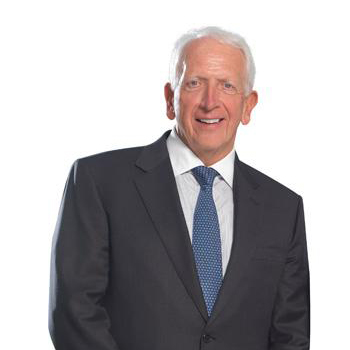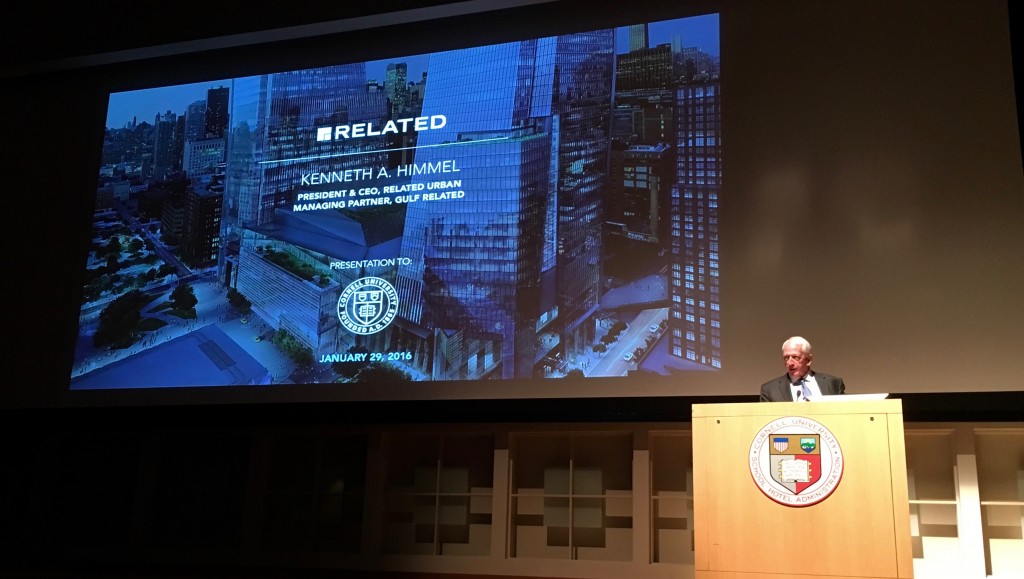

On Friday, January 29, when Ken Himmel (‘70), President and CEO of Related Urban, had the opportunity to attend the ribbon cutting for the grand opening of Hilton West Palm Beach – a project he had worked on for over 10 years – the CEO chose to speak at his alma mater instead.
Himmel shared stories of major developments he has led in gateway cities in the US and abroad in Saudi Arabia and Abu Dhabi. In his time at the helm of Related Urban, Himmel has been responsible for such major developments as CityPlace in West Palm Beach and more recently Hudson Yards.
While CityPlace – a 72-acre project – was completed many years back, Hudson Yards is still in its early construction phases. Cornell students got a glimpse of how many of the design elements have been influenced by the tenant mix and management of political processes such as the $2.3bn in funding provided by the Bloomberg Administration to extend the 7 train subway, bolstering the feasibility of the development. Himmel stressed that these aspects of development are managed by relationships, and that while it might delay the construction of a project, listening to the needs of potential tenants and then jigsawing the tenant mix based on the project vision leads to the most successful development. He further commented that the completion of the 7 train subway extension, which opened Sunday, September 13, 2015 is instrumental in garnering foot traffic to completed parts of the site, and triggers invaluable anticipation of development of the remaining 28-acres.

Furthermore, Himmel explained that a key focus of the Hudson Yards project is interconnectivity. In order to set the retail portion of this project apart from traditional malls anchored by large department stores, Related hired best-in-class architects to design unique public space around the tenant space to ensure a desirable environment for customers to shop and enjoy Hudson Yards. The tenants and customers will take advantage of economies of agglomeration, where top restaurateurs are positioned among one another in a 40,000 square foot food hall, and in the same multi-level retail tower are some of the world’s preeminent retailers.
When asked about the importance of IRR as a metric for measuring returns on developments at Related, Himmel responded, “We focus mainly on long-term cash flows and unlevered return on cost.” This mimics a central theme that Himmel continued to reiterate: Related does not develop assets to sell, but rather legacy assets that it intends to hold indefinitely. Himmel has proven time and again that holding real estate assets that Related develops for the long-term builds considerable value that is realized in the form of long-term cash flows derived in large part from the stayed tenants it attracts through its relationships with top performing luxury retailers, restaurateurs and companies that continue to occupy its office towers.
With other major projects underway, Himmel continues to create dynamic cities at Related Urban. Cornell’s Baker Program in Real Estate students were fortunate to participate in a Q&A session with Himmel following his presentation that Friday morning, and will heed his advice as well as that of other distinguished speakers who take time to speak at Cornell on a weekly basis.

